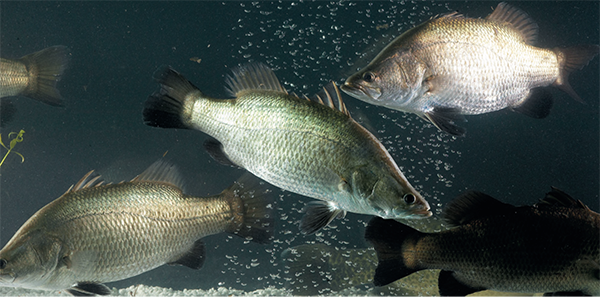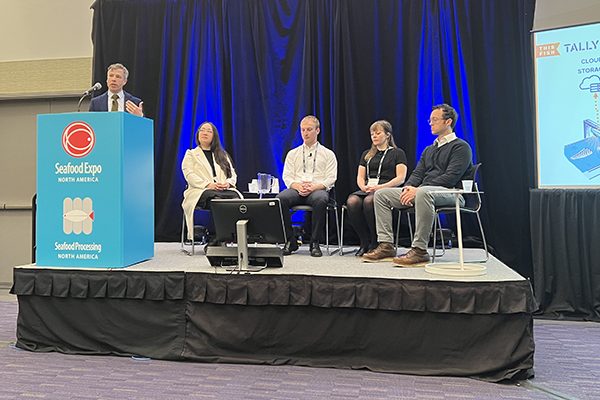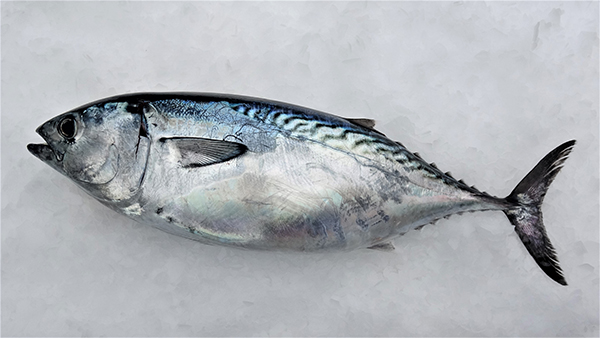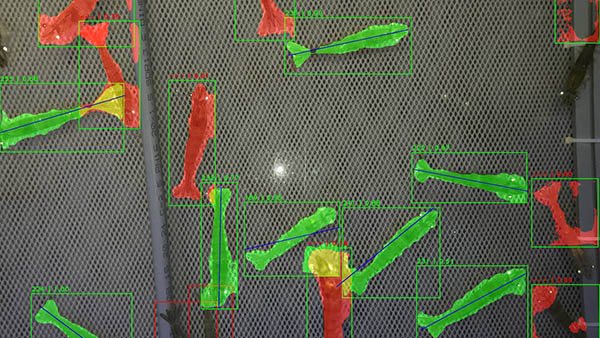University of Queensland researcher says AI can ‘push the boundaries of aquaculture’ to help meet global food demand

Computer simulations are key to bringing aquaculture into line with genetic advances being made in land-based agriculture, according to a University of Queensland (UQ) researcher.
Ph.D. candidate Jessica Hintzsche from UQ’s Queensland Alliance for Agriculture and Food Innovation (QAAFI) is using software to virtually model the genetic tools available to barramundi farming, in collaboration with the ARC Research Hub for Supercharging Tropical Aquaculture at James Cook University and MainStream Aquaculture Group.
“We are creating the farm’s virtual twin – a 3D digital replica of the real thing to allow us to run simulations,” Hintzsche said. “The benefit of a digital twin is that we can test the impact of different genomic, breeding and production technologies such as parental selection and harvesting options before they are rolled out on the farm. It would allow producers to make decisions about how to take their business to the next level with healthy fish populations.”
Aquaculture in Australia’s north is currently valued at AUS $223 million (U.S. $153 million) and has a projected value of AUS $1.34 billion (U.S. $862 million) by 2030. Hintzsche said aquaculture was growing exponentially, but the integration of genetic technologies into breeding programs was slow, with just 10 percent of the fish farmed globally descended from genetically improved strains.
“We are at a tipping point globally where the production of farmed fish is about to overtake wild-caught fish in fisheries,” Hintzsche said. “To meet demand and keep up with other agricultural industries, genetic tools need to be integrated into breeding programs.”
Hintzsche said there were many benefits of using AI, including sustainability, and there was no limit on what could be modeled with the right quantitative data.
“No one yet has the capacity to apply these techniques in aquaculture and it’s amazing to be on the forefront, using this technology to push the boundaries of aquaculture,” she said. “The sky is the limit.”
Follow the Advocate on Twitter @GSA_Advocate
Now that you've reached the end of the article ...
… please consider supporting GSA’s mission to advance responsible seafood practices through education, advocacy and third-party assurances. The Advocate aims to document the evolution of responsible seafood practices and share the expansive knowledge of our vast network of contributors.
By becoming a Global Seafood Alliance member, you’re ensuring that all of the pre-competitive work we do through member benefits, resources and events can continue. Individual membership costs just $50 a year.
Not a GSA member? Join us.
Author
Tagged With
Related Posts

Fisheries
Artificial intelligence algorithm from WCS is the first to correctly estimate fish stocks
Researchers created an artificial intelligence model that has successfully estimated fish stocks with 85 percent accuracy in trials.

Intelligence
AI is becoming an ‘integral part’ of fisheries management and seafood processing
Artificial intelligence (AI) is playing a larger role in seafood, as data is at the heart of the so-called fourth industrial revolution.

Intelligence
Artificial intelligence is taking fish farming (and sushi) in Japan to greater heights
From artificial intelligence to remotely operated vehicles, new technologies offer Japanese aquaculture improved efficiency and insights into fish farming.

Innovation & Investment
New artificial intelligence technology can detect early stress symptoms in farmed shrimp
A new artificial intelligence-based computer vision system can count and measure shrimp with up to 95 percent accuracy.



